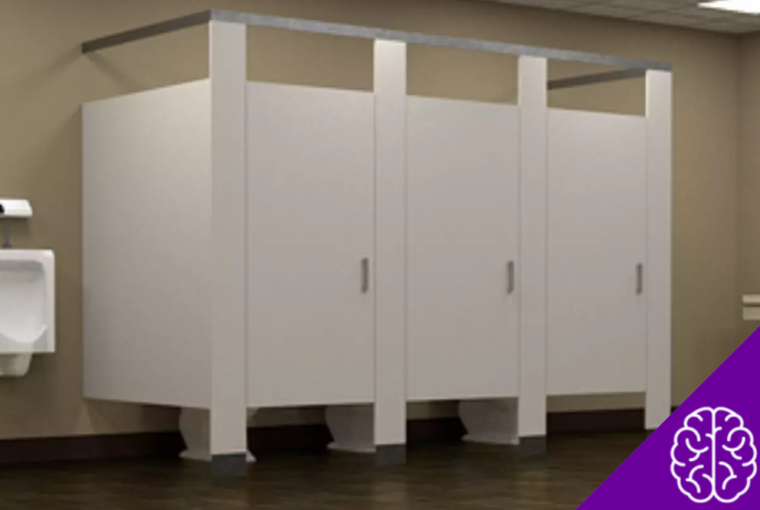Have you ever stepped into a public restroom and wondered why the door doesn’t go all the way down to the floor? That small gap might seem like a design compromise, but rest assured, it serves multiple crucial purposes.
This feature, commonly found in public places, is more than just an odd quirk of architecture. It’s an intentional design choice that enhances safety, sanitation, and efficiency in high-traffic restrooms.
If you’re curious about the reasoning behind this design, we’re here to break it down for you. Read on to discover how this simple detail does more than meets the eye.
Why Are Public Restroom Doors Designed with Gaps?
Those cut-out sections at the bottom of public restroom doors may look inconvenient or even awkward at first.
However, when you think about the design challenges inherent in public spaces, the logic becomes evident. Here’s a closer look at the key reasons behind this design:
1. Enhanced Safety
Imagine the scenario of someone accidentally locking themselves inside a stall and being unable to get out.
It could be caused by a broken lock, illness, or even fainting. The gap at the bottom of the door provides an easy escape route in these situations.
Instead of waiting for maintenance crews or emergency responders, a person can crawl out and avoid unnecessary stress.
Additionally, the gap allows others to notice if someone has collapsed or is in distress. This visibility can be lifesaving in scenarios when swift assistance is required.
2. Improved Hygiene and Cleaning Efficiency
Public restrooms are intended to accommodate a constant flow of users throughout the day. Cleaning large, enclosed stalls floor-to-ceiling would be time-consuming.
With the bottom of the stall exposed, floor cleaning (often done with mops or automated machines) becomes far easier and faster. Custodians can complete their tasks more efficiently, ensuring cleanliness even during busy periods.
3. Ventilation and Airflow
Restrooms, especially those situated in congested areas like malls, airports, or train stations, can quickly become unpleasant without proper ventilation.
The open bottom of the doors improves airflow and reduces the buildup of unpleasant odors. This design is particularly beneficial in spaces where mechanical ventilators alone may struggle to keep up.
4. Cost-Effectiveness
Designing and manufacturing full-length doors would involve more material and higher labor costs, which may not be justified for public restroom stalls.
By opting for partial doors, businesses save on construction and ongoing maintenance costs, achieving functionality without unnecessary expenses.
5. Indicating Occupancy
Have you ever stood outside a restroom stall, uncertain whether it’s occupied? That small gap eliminates ambiguity.
From the outside, one can glance at the shadow of feet or the sound of movement to know if the stall is taken. This consideration makes high-traffic restrooms more efficient for users during peak hours.
6. Discouraging Misuse of Space
Privacy is important, but in public restrooms, too much privacy can sometimes lead to misuse. Full-length doors might inadvertently encourage activities that are unsafe or inappropriate for these facilities.
The gap at the bottom ensures a minimum level of visibility while still maintaining dignity and privacy for the user.
A Design Rooted in Practicality
What at first might seem like an oversight is actually a thoughtful intersection of functionality and resourcefulness. Public spaces are designed to serve the needs of thousands of users daily, balancing safety, economics, and convenience.
The features included in a restroom stall, such as the gap at the bottom of the door, address these goals while remaining practical and versatile.
Next Time You Notice the Gap…
The next time you use a restroom in a public place, take a moment to appreciate the details that went into designing it.
From safety to hygiene, that small gap in the door is working behind the scenes to enhance your experience.
Do you have other burning questions about everyday designs or architectural quirks? Drop us a comment, and we might just answer it in our next article!


